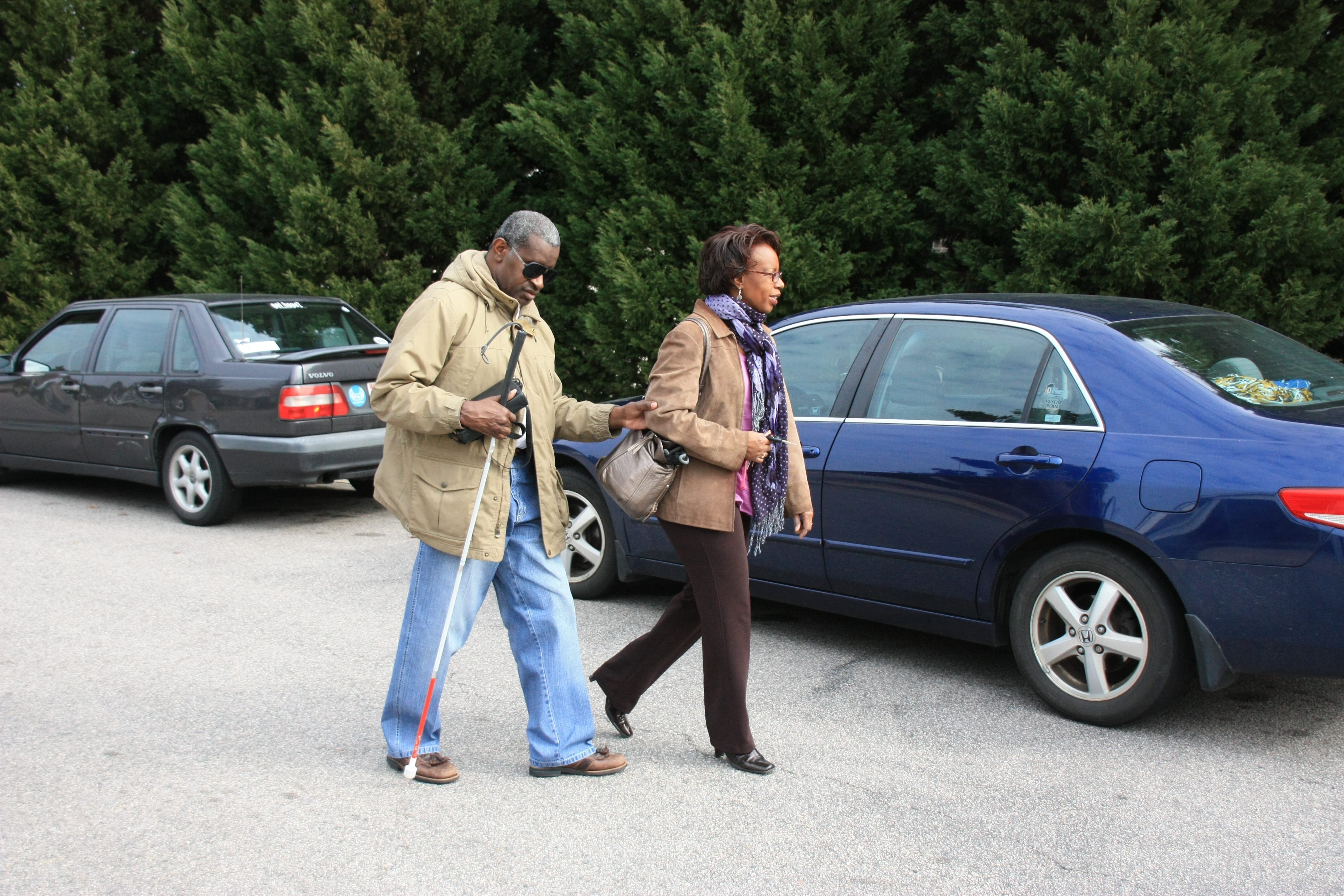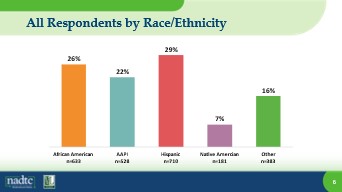Diversity, Equity and Inclusion! We hear these words a lot, in the media, in our workplaces, even in everyday conversation…but what do they mean when applied to transportation? These are complex issues without simple answers, deserving of time and attention by all who care about the availability of accessible transportation for all who live in our communities.
 The National Aging and Disability Transportation Center’s (NADTC) Transportation Diversity, Equity and Inclusion Survey was developed in collaboration with a National Advisory Committee. The survey was conducted in partnership with V&L Research and Consulting between February 23 and April 19, 2021. A total of 2,435 diverse older adults, younger adults with disabilities and caregivers responded, representing all 50 states plus the District of Columbia.
The National Aging and Disability Transportation Center’s (NADTC) Transportation Diversity, Equity and Inclusion Survey was developed in collaboration with a National Advisory Committee. The survey was conducted in partnership with V&L Research and Consulting between February 23 and April 19, 2021. A total of 2,435 diverse older adults, younger adults with disabilities and caregivers responded, representing all 50 states plus the District of Columbia.
The definition of diversity adopted for the survey encompasses racial, ethnic and cultural diversity and includes Tribal elders and people with disabilities, new immigrant groups, those with Limited English Proficiency (LEP), non-English speakers, and LGBTQ+ individuals. The graph on the right shows the percent of responses received from African American, AAPI (Asian and Pacific Islander), Hispanic, Native American and Other older adults, younger adults with disabilities and caregivers. Respondents categorized as “Other” include Arab/Middle Eastern + Multi-racial + respondents who checked “Not Listed” and “Prefer not to answer” + White respondents, who were included only if they identified as LGBTQ+ or were caregivers for people from diverse backgrounds. Among all respondents, 821 were immigrants, refugees and/or foreign-born, while 312 identified as LGBTQ.
diversity and includes Tribal elders and people with disabilities, new immigrant groups, those with Limited English Proficiency (LEP), non-English speakers, and LGBTQ+ individuals. The graph on the right shows the percent of responses received from African American, AAPI (Asian and Pacific Islander), Hispanic, Native American and Other older adults, younger adults with disabilities and caregivers. Respondents categorized as “Other” include Arab/Middle Eastern + Multi-racial + respondents who checked “Not Listed” and “Prefer not to answer” + White respondents, who were included only if they identified as LGBTQ+ or were caregivers for people from diverse backgrounds. Among all respondents, 821 were immigrants, refugees and/or foreign-born, while 312 identified as LGBTQ.
Through the survey, we wanted to learn about the transportation experiences of diverse older adults, younger adults with disabilities and caregivers and their hopes for transportation in their communities that would better meet their needs. NADTC’s work on behalf of older adults and people with disabilities is based on an understanding that individual needs can be quite different. Different races, ethnicities and cultures, as well as geographic differences, are characteristics that must be considered if everyone in the community who needs transportation has the opportunity to use transportation services to get where they need and want to go.
Summary of Findings
It came as no surprise to learn that the primary destinations where both diverse older adults and diverse younger adults with disabilities told us they need or want to go are to medical appointments, grocery stores, pharmacies and to visit family or friends. Across racial and ethnic groups, diverse older adults are much more likely to drive a personal vehicle than are diverse younger adults with disabilities.
The diverse caregivers who responded to the survey were more likely to provide rides to their loved ones than to arrange rides. Most caregivers also reported that it was difficult to find transportation alternatives that meet the needs of the person for whom they provide care, whether the care receiver is a younger adult with disabilities or an older adult.
As expected, the pandemic curtailed travel by diverse older adults and diverse younger adults with disabilities no matter the means of travel used. For example, the use of public transportation by both diverse younger adults with disabilities and diverse older adults declined by about half due to fears of COVID-19. Interestingly, more than any other group, half (50%) of Native American younger adults with disabilities who responded to the survey said they have used public transit since the pandemic. Despite declines in usage since COVID, the transportation modes most often used by diverse respondents remained about the same. Riding with family and friends and walking were identified as the primary means of getting around, followed by public transit and riding a bicycle and/or using an electric bike.
The survey asked respondents to rate the transportation available to them in their household, neighborhood and the community as a whole. Diverse younger adults with disabilities were much more likely than diverse older adults to say that they experienced difficulty getting where they needed or wanted to go. For all diverse younger adults with disabilities and diverse older adults who do not have good access to transportation, the consequences include not being able to get where they need to go and feeling isolated, dependent on others and frustrated.
Diverse older adults and diverse younger adults with disabilities face numerous transportation barriers. Both groups identify major barriers as not having family and friends to drive them, not enough public transit, concerns about transportation costs, and concerns about COVID-19. Diverse younger adults with disabilities also consider wait times to be a barrier, while diverse older adults are more concerned about a lack of transportation options in the communities where they live.
Similar to the findings of NADTC’s 2018 National Poll: Transportation Needs and Assessment, diverse older adults and diverse younger adults with disabilities are most likely to turn to family, friends and neighbors for information about transportation. In addition, more than one-third of African American, AAPI and Hispanic respondents, and one-fourth of Native American respondents of all ages report that they search online for transportation information.
The top transportation changes diverse older adults and diverse younger adults with disabilities would like to see are free or less expensive options and better public transportation. The desire for less expensive transportation was noted by about half of Native American and Hispanic younger adults with disabilities and more than a third of African American, AAPI and Native American older adults.
Next Steps
The survey report is filled with detailed information about the findings briefly discussed in this blog. In 2022, NADTC will partner with a number of communities around the country to conduct focus groups of diverse older adults, younger adults with disabilities and caregivers. In addition, we want to know more about the experiences of transportation providers in serving the diverse groups living in their communities, so we will also convene regional meetings with transportation stakeholders. Stay tuned for more information!
To learn more, check out the Transportation Diversity, Equity and Inclusion Initiative on the NADTC website, send us an email to contact@nadtc.org or call the toll-free number at 866-983-3222.
This blog was written by Virginia Dize, Co-Director for the National Aging & Disability Transportation Center and USAging.
Leave a Reply